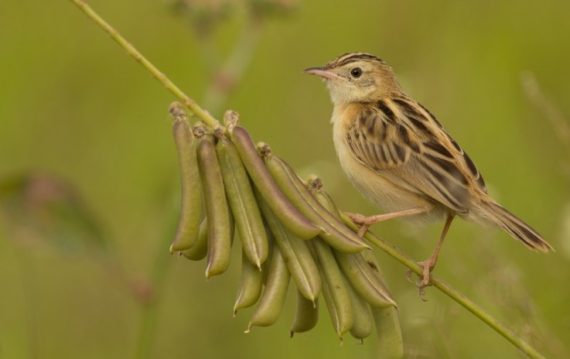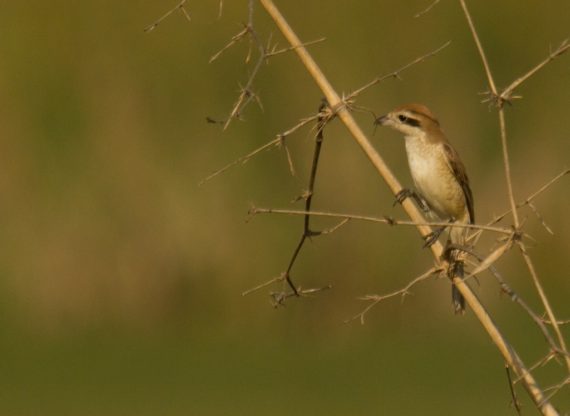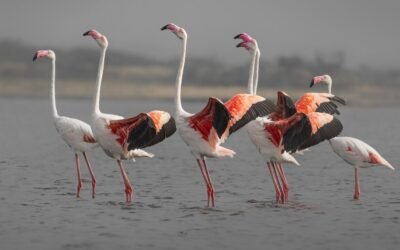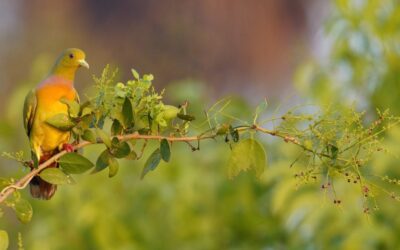This is the second in a new series focussing on Patch Birding. In this series we highlight birders who have been faithfully visiting their patch, through this, learning the details of the bird life and its seasonality there.
1. Please tell us about yourself: where do you live and what do you do.
My name is Krishna Murthy and I am from Kolar Gold Fields (KGF). I am currently living in Bangalore and since 2007 I’ve been working as a chip design engineer for Analog Devices.
2. Please tell us about your patch: where is it located, what habitats does it contain, how often do you visit and whether you follow any sort of procedure or protocol when visiting for birding.
My patch is Hoskote Lake and it is located about 20kms from Bangalore on the Kolar highway. I have been birding in this patch for almost 5yrs. Staying in the Eastern part of the city allows me easy access to this lake.
The habitat around the lake is varied – includes reed patches, Acacia plantation, grassland, and agricultural lands. This creates a good opportunity to observe a wide variety of bird species.
I try to visit the lake at least once a month but generally, the visits are more frequent during the migration period. (I have about 100 checklists from this place)
There is no specific protocol/procedure that I follow, but over the years I have tried to explore the areas surrounding the lake. On one of the occasions, I ventured so far exploring the lake that I almost reached Devanahalli (~30km from Hoskote).
Habitats at Hoskote Lake
3. What birds are found in your patch? Please comment on any seasonal changes.
eBird hotspot for Hoskote has about 230 species reported so far (both resident and migratory). The extensive reed patch on the Northern side of this lake has provided some fine habitat for birds like Black-breasted Weavers, which are rarely seen elsewhere around Bangalore. Also, this is a great place to see bitterns/rails and crakes, during the right season.
Left to Right: Black-breasted Weaver, Greater Spotted Eagle, Zitting Cisticola, and Red Avadavat
Winter months are the best times to see the waterfowl, raptors and other migrants, but summer and monsoon also provide the opportunity to observe our breeding birds. The weavers and munias are particularly found in abundance along the reed patches. Apart from these, monsoon is a great time to see quite a good number of Bitterns -Yellow/Cinnamon/Black
 Seasonality chart for Yellow, Cinnamon and Black Bittern at Hoskote Lake. Image from eBird
Seasonality chart for Yellow, Cinnamon and Black Bittern at Hoskote Lake. Image from eBird
4. Are there any highlights or interesting incidents that you would like to share?
There have been multiple interesting incidents over the years, but here are a couple of them:
- October 2018 saw a good influx of Common Cuckoo (passage migrant) at the lake. About 10-15 individuals stayed put around the lake for a week or so. During that week, the lake almost had a festive feel (particularly over the weekend) with many birders/photographers visiting the place to see these birds, we jokingly referred to this as “Hoskote Cuckoo Mela/Festival”.

 Frequency chart for Common Cuckoo at Hoskote Lake. Image from eBird
Frequency chart for Common Cuckoo at Hoskote Lake. Image from eBird
- Bird walks during ‘Great Backyard Bird Count’ (GBBC) or walks on other occasions have been fun, it is a great way to connect with other birders. One of the memorable GBBC walks was in 2016 at Hoskote, where close to 20 birders participated. The highlight of the walk was the sighting of 4 individuals of Indian Spotted Eagle in a single frame, along with 1 Greater Spotted Eagle. Overall, a good number of raptor sightings on that day made for an interesting GBBC walk.
5. Has your understanding of the birdlife (diversity, seasonality, breeding, etc) of your patch increased over time? In what way?
Birding in the same place for a long period offers great insights into multiple aspects of birding. Listing below some points:
-
One of the things about birds (particularly the migrants) that I am mesmerized about is their ‘site fidelity’ – that is to choose the exact same patch year over year. I have noticed Brown Shrike, Bluethroat and other species choosing the same location (sometimes the same perch!). It is amazing how these little wonders manage to do this, but at the same time, it is worrisome to think of the consequences of the landscape change that is happening around. (how would a Brown Shrike feel when the acacia shrub it used to perch disappears?)
Bluethroat and Brown Shrike
- Having a patch allows you to understand the micro-habitats better – you start to notice patterns in sightings (both spatial and temporal). One would easily say where and when a particular species can be seen at a location (E.g: Black-breasted Weaver at the north-western side reeds, Yellow Bitterns on the eastern side reeds during monsoon, Munias in good numbers during monsoon and so on).
- A patch allows you to notice landscape changes too. I have seen a reduction in exposed lake beds suitable for waders like stints, greenshanks, etc. Some of the reasons I believe could be the extension of agricultural fields and the control of water inflow to the lake. I have also noticed increased commercial fishing – resulting in good numbers of Spot-billed Pelicans, Painted Storks.
- Apart from these points, I am very happy to see how a large network of bird watchers are helping in documenting the bird diversity of lakes through eBird.
Greater Flamingo
Note: see the Hoskote Lake hotspot page in eBird to explore the birds of this wonderful location.
Photo credits: Krishna Murthy/ Macaulay Library
Header image: Black Bittern Ixobrychus flavicollis by Albin Jacob/ Macaulay Library















Great work Mr. Krishna Murthy! Please keep it up and sent us your periodical reports. Thanks!
G. Parameswaran.